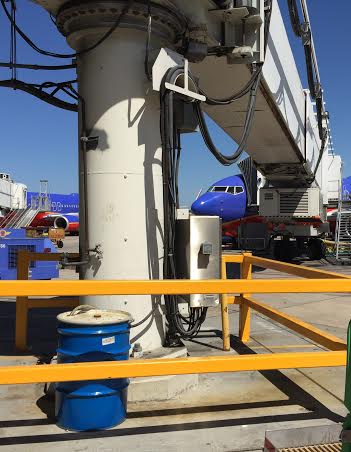There’s a petition out there to change the name of Pittsburgh International Airport to Fred Rogers International Airport.
Where would you weigh in?
Fred Rogers grew up near Pittsburgh and for 33 years episodes of Mister Rogers’ Neighborhood, the beloved children’s television show he and his red sweater starred in, were produced at Pittsburgh’s public TV station, WQED.
A special gallery at Pittsburgh’s Heinz History Center displays artifacts from the show, including Rogers’ iconic sweater, necktie, khakis, sneakers and the living room set he entered at the beginning of each show. There’s also a recently refreshed exhibit dedicated to Rogers on Concourse C at Pittsburgh International Airport.
But that isn’t enough for Ian Miller, a Pittsburgh citizen who last week started a change.org petition asking that the name of Pittsburgh International Airport be changed to Fred Rogers International Airport.
“Fred Rogers, a television pioneer and children’s entertainer, shared Pittsburgh’s sense of community with the world through his PBS show,” Miller writes in his petition, “Pittsburgh is still an active transit hub and, for many people, our airport will be their first experience in Pittsburgh. We wish to welcome everybody to our neighborhood.”
The petition has over 11,000 signatures so far.
And while Allegheny County Airport Authority, which manages Pittsburgh International, appreciates Miller’s enthusiasm and agrees “Fred Rogers occupies a special place in the hearts of Pittsburghers and people around the world,” said airport spokesman Bob Kerlik, it seems unlikely the airport’s name will be changed.
“In 2016, we completed a rebranding of the airport to better match the ongoing renaissance of the Pittsburgh region,” said Kerlik, “And at this time our focus is on continuing to advance ‘Pittsburgh International Airport’ as a global aviation leader.”
Naming – or renaming – an airport after a celebrity with a local connection isn’t unheard of in the United States.
In Santa Rosa, CA, for example, passengers land and take-off from the Charles M. Schulz -Sonoma County Airport. In Louisiana, the major airport is the Louis Armstrong New Orleans International Airport. John Wayne Airport serves Orange County, CA and the Will Rogers World Airport provides air service to Oklahoma City, OK.
And while it has recently been rebranded as Hollywood Burbank Airport, the official name of the airfield about 12 miles north of downtown Los Angeles is still legally Bob Hope Airport.









